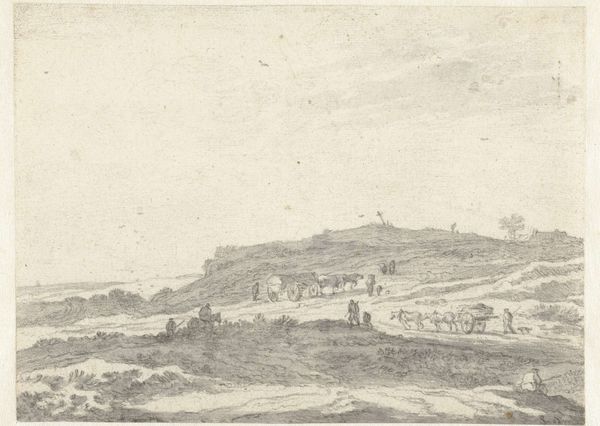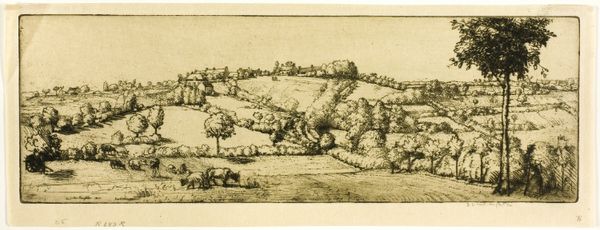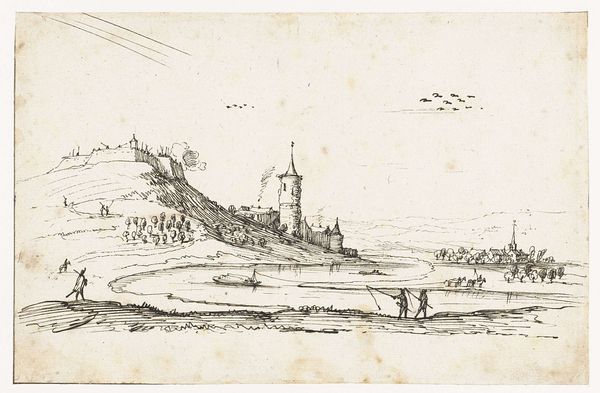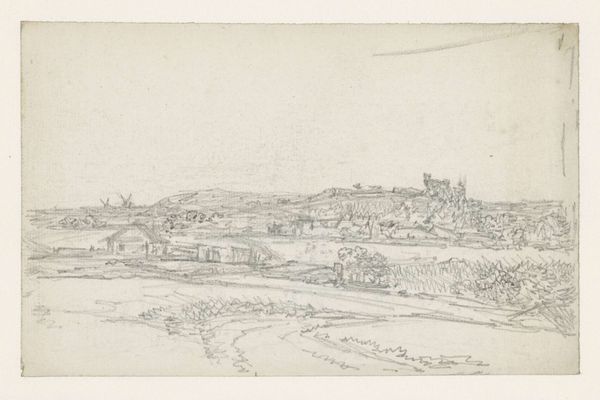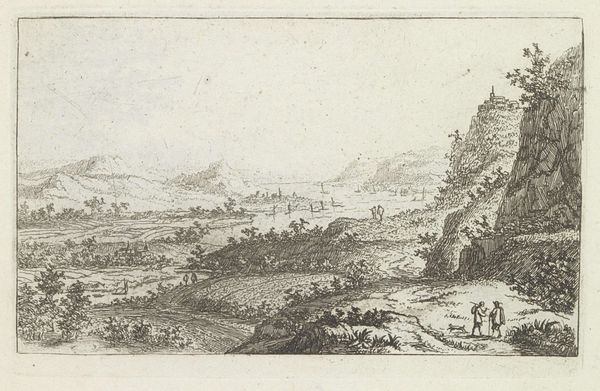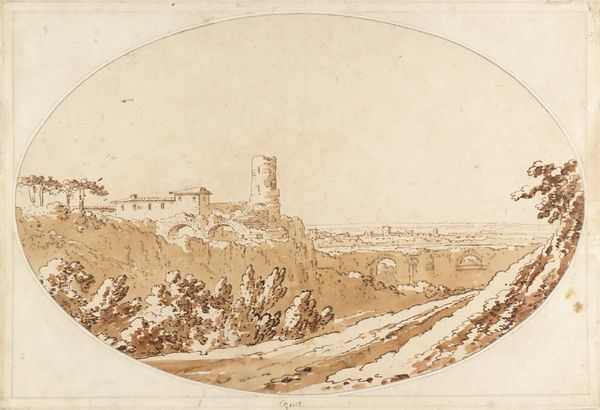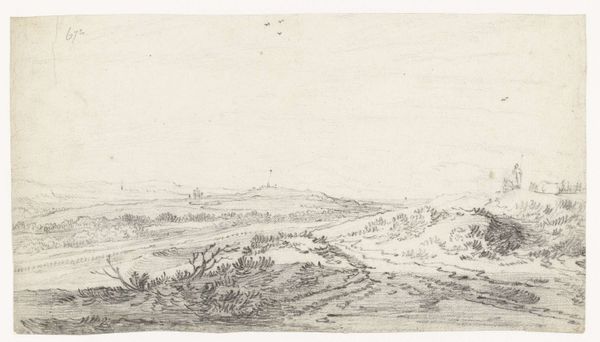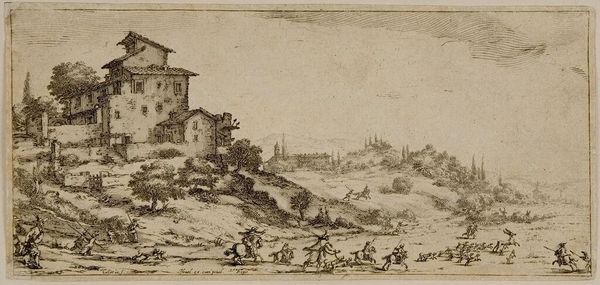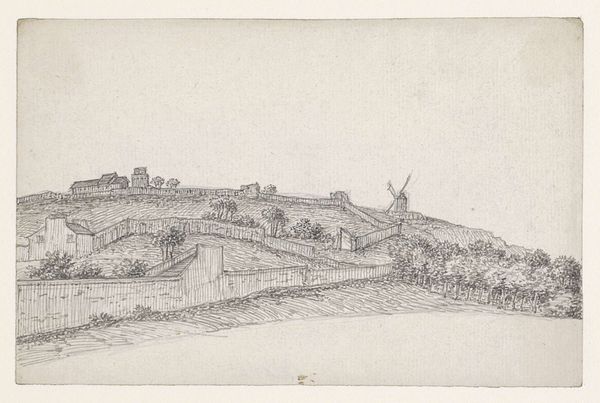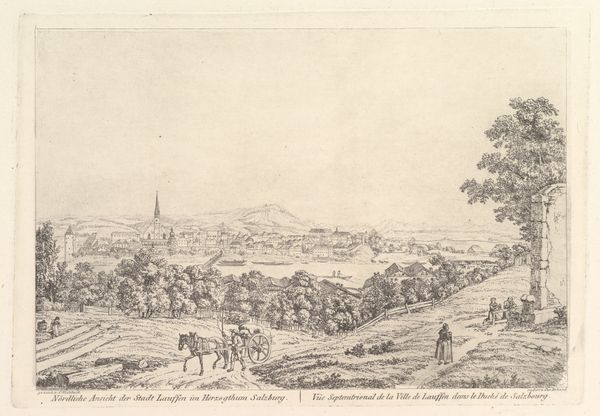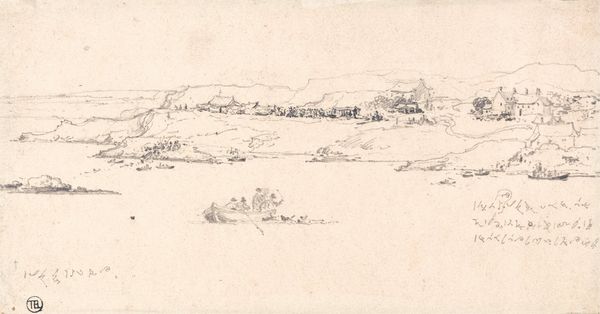
drawing, print, etching
#
drawing
# print
#
etching
#
landscape
#
realism
Copyright: National Gallery of Art: CC0 1.0
Curator: Let’s turn our attention to James McBey’s “Tetuan,” an etching dating back to 1913. Editor: Ah, what a whisper of a scene. It's like memory itself, a faded but enduring vision. All warm sepias and suggestions... it evokes such stillness. Curator: The magic lies, I think, in McBey's mastery of the etching process. Observe the varying line weights, achieved through careful manipulation of acid on the metal plate. You see how that controlled corrosion defines depth, texture and the sun-baked walls. Editor: Absolutely. Look at the lines composing the crowd gathered near the entrance, it just gives the feel for them. It almost appears to have a quality like pen and ink; it feels very immediate. How might this etching have been received, do you think? Curator: Considering that McBey dedicated his practice to depicting global subjects—from bustling North African cities to the First World War battlefields—I think it provided viewers, at that moment in time, with something truly informative in terms of documenting a sense of place. Editor: Do you think that had something to do with the fact it’s a print? The fact of reproducibility and wider access of this kind of information seems key. And even, what about the economy and logistics of these etched lines; How quickly did this process allow him to communicate these foreign lands in his own way? Curator: Those are wonderful observations. The lines between artistic intent, materiality, and broader access were indeed, critically bound. Editor: Ultimately, it is that ephemeral quality which really sticks with me, alluding to a place so distant and different. Thanks, I love thinking about how prints communicate that. Curator: It’s been a journey unraveling its nuances. The work now seems to speak in its original tones; from a foreign market rendered via familiar industrial practices.
Comments
No comments
Be the first to comment and join the conversation on the ultimate creative platform.
